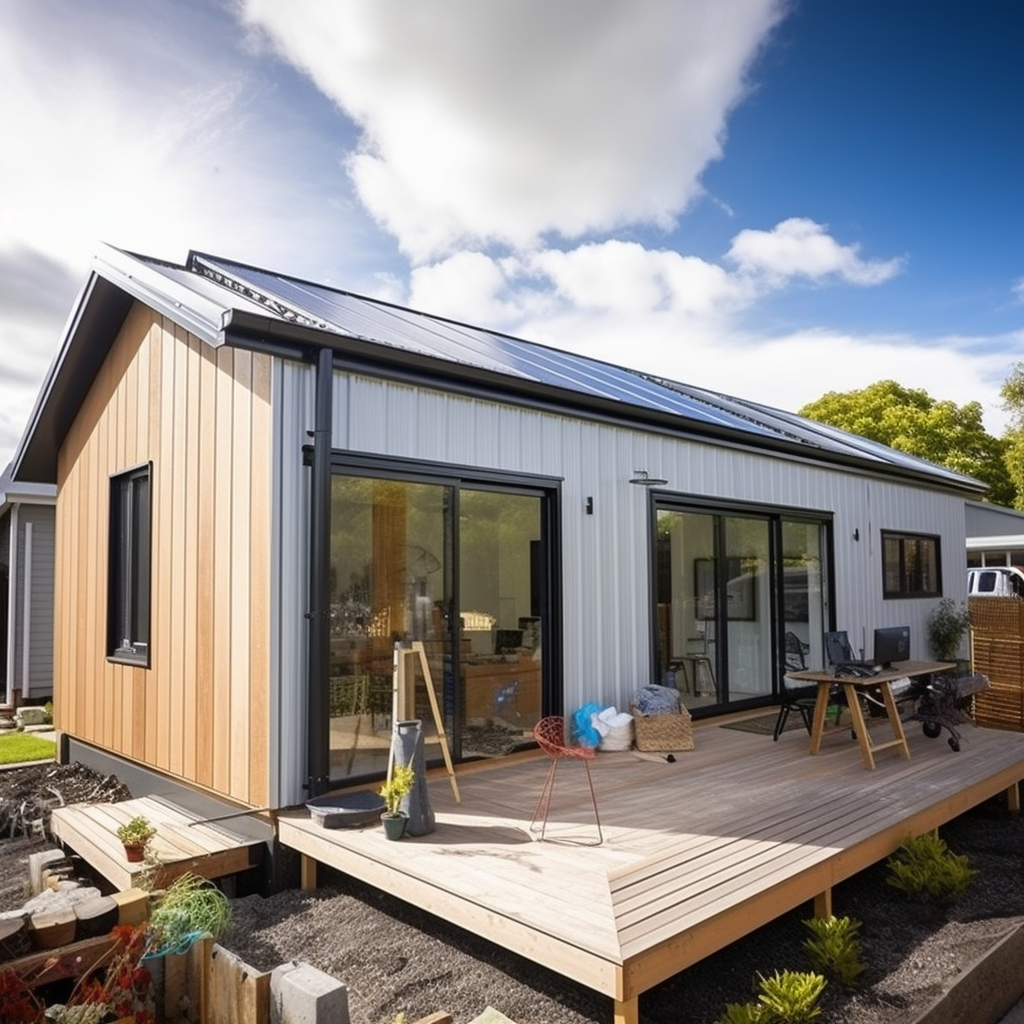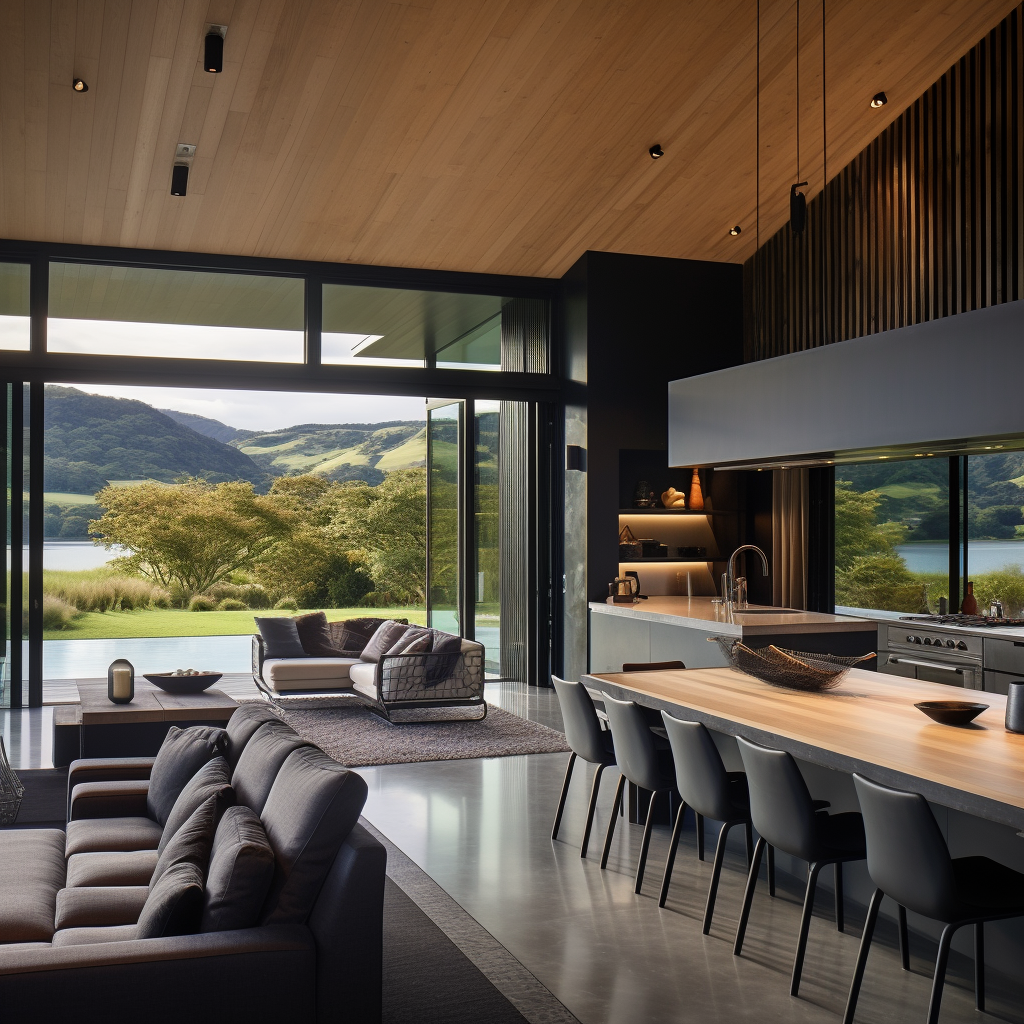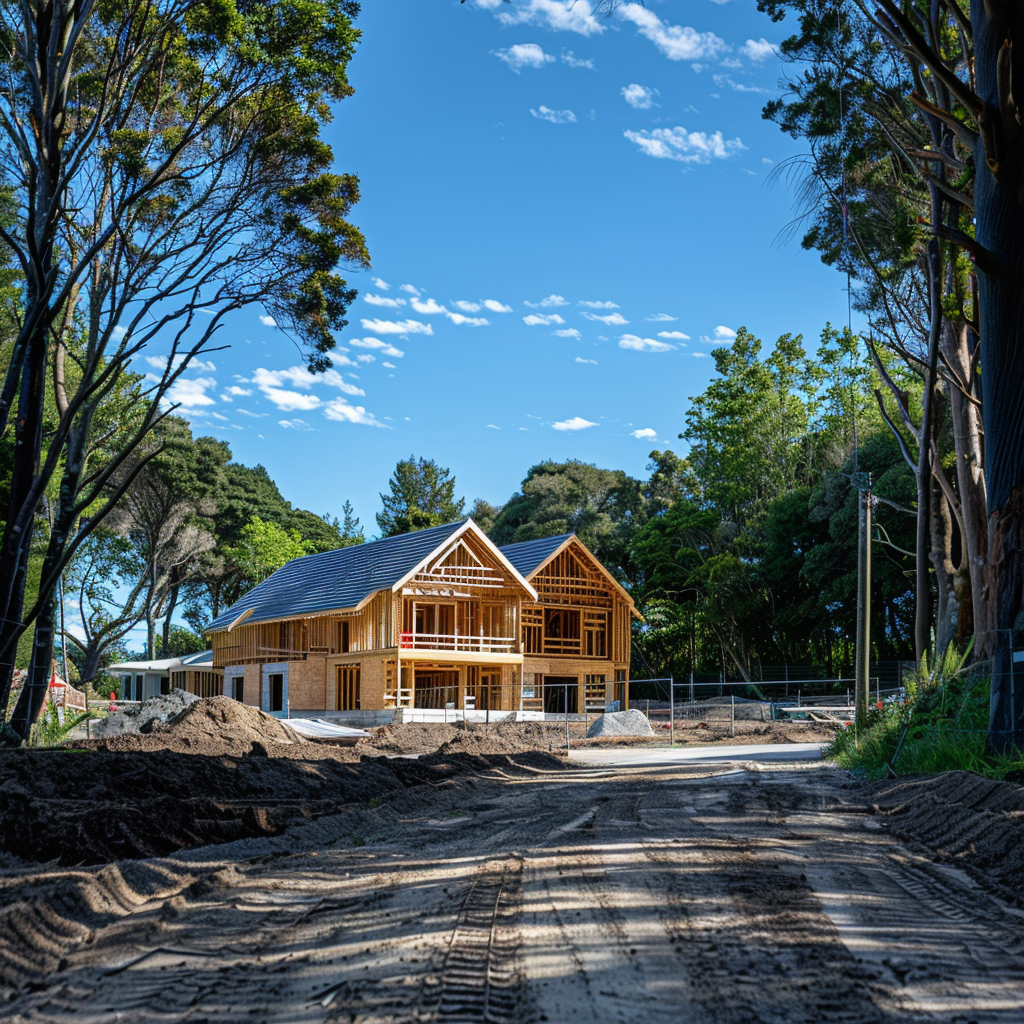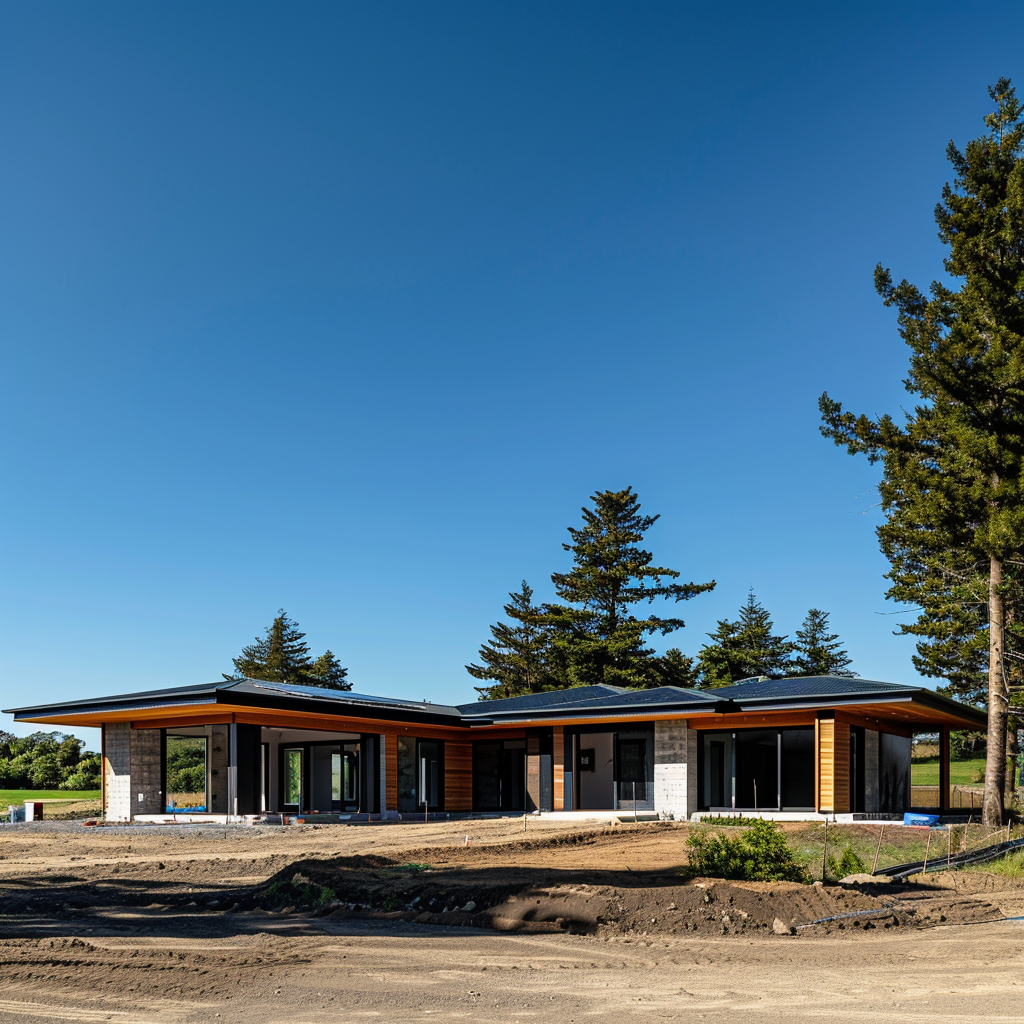When you plan to build a new home, incorporating passive solar design is a strategic move that can yield long-term benefits. Passive solar design refers to the use of the sun's energy for the heating and cooling of living spaces by exposure to the sun. When properly implemented, it takes advantage of the local climate to maintain a comfortable temperature range in the home.
The reasons for incorporating passive solar design in new builds stretch beyond individual comfort. It represents a commitment to reducing reliance on non-renewable energy sources and minimising environmental impact. By aligning your home’s design with the sun’s path and employing materials that enhance thermal mass and insulation, you embrace an approach that saves energy and reduces utility costs. Passive solar design not only leverages natural resources but also enhances indoor air quality and comfort, making it an intelligent choice for those looking to build sustainably.
Incorporating passive solar principles from the beginning of your new construction project lays the groundwork for an efficient, cost-effective, and environmentally conscious living space. It's an investment in both the present usability of your home and its future value.
Benefits of Incorporating Passive Solar Design in New Builds
When you integrate passive solar design into your new home, the advantages are multifaceted and long-lasting. Here's a closer look at the benefits:
- Reduction in Energy Consumption: Passive solar design harnesses sunlight for heating and lighting, significantly reducing the reliance on artificial energy sources. With strategically placed windows and materials that absorb and slowly release solar heat, your home maintains a comfortable temperature using less energy.
- Cost-effectiveness: The initial design considerations can result in substantial financial savings over time. By minimising the need for powered heating and cooling systems, you'll see a decrease in utility bills. Passive solar homes often have a higher resale value due to their energy efficiency and sustainability features.
- Maximising Use of Natural Resources: Passive solar design principles make optimal use of the sun — a free, abundant source of energy. This reduces the demand on finite resources and harnesses clean energy that doesn't contribute to pollution.
- Improved Indoor Comfort and Air Quality: A well-designed passive solar home promotes even temperatures and maximizes natural daylight. It can also enhance ventilation which improves air quality, creating a healthier living environment that aligns with New Zealand's clean and green ethos.
Each of these benefits aligns with environmental sustainability goals while also meeting practical homeowner needs. By emphasising these aspects, new builds not only become havens for their occupants but also contribute positively to broader ecological objectives.
Key Elements to Consider in Passive Solar Design for New Builds
When designing new buildings with passive solar principles, certain key elements are pivotal for optimising the benefits of this sustainable approach. These include:
Window Placement and Orientation in Passive Solar Design
Strategic placement and orientation of windows are crucial for maximising solar gain during the winter and minimising it during the summer. South-facing windows (in the Southern Hemisphere) enable the sun's low-angle rays to penetrate into living spaces in winter, providing natural warmth. Conversely, these windows should be designed to avoid harsh summer sun when it is higher in the sky.
Shading Devices in Passive Solar Design
The use of shading devices such as overhangs, louvers, and pergolas helps control solar exposure. During peak summer months, these devices protect interiors from excessive heat gain while allowing lower-angle winter sunlight to enter.
Thermal Insulation and Thermal Mass in Passive Solar Design
High-quality thermal insulation is vital for reducing unwanted heat transfer between the building interior and exterior. Insulation helps keep warm air inside during colder months and hot air outside during warmer months. In tandem, thermal mass materials like concrete or brick absorb and store solar energy, releasing it gradually to maintain consistent indoor temperatures.
By integrating these key elements of passive solar design into new constructions, you establish a solid foundation for a building that is both energy-efficient and comfortable year-round.
Techniques for Achieving Passive Solar Heating and Cooling in New Builds
Incorporating effective techniques for passive solar heating and cooling is critical to maximising the benefits of passive solar design in new builds. Here are some methods to achieve this:
1. Direct Gain Systems in Passive Solar Design
Direct gain is the simplest method where sunlight enters a living space directly through windows and is absorbed by the floor and other surfaces which then radiate the heat back into the room. Key considerations include:
- Window Quality: High-quality glazing minimizes heat loss.
- Thermal Mass: Materials like concrete or brick floors absorb and store heat.
- Room Layout: Placement of furniture should allow sunlight to reach thermal mass surfaces.
2. Indirect Gain Systems in Passive Solar Design
Indirect gain systems involve capturing solar energy in an area adjacent to the living spaces, such as a sunspace, which collects heat that is then distributed throughout the house. Features include:
- Sunspaces: Glazed rooms that absorb heat and transfer it indoors using natural convection.
- Thermal Storage Walls: Thick walls between the sunspace and living areas store heat for slow release.
3. Trombe Walls
A Trombe wall is a type of indirect gain system featuring a dark, heat-absorbing material behind clear glass. The wall absorbs solar energy during the day and releases it gradually over time into the interior spaces.
- Ventilation: Adjustable vents can help regulate temperature by allowing warm air to enter or leave.
4. Solar Water Heating in Passive Solar Design
Solar water heating integrates solar energy into providing hot water, which can be used for domestic purposes or space heating.
- Solar Collectors: Panels on the roof collect solar energy to heat water.
- Storage Tanks: Heated water is stored until needed, reducing reliance on traditional water heaters.
By strategically implementing these techniques, you can create a new build that not only harnesses natural energy but does so with remarkable efficiency. Each technique contributes to a sustainable living environment while reducing dependency on non-renewable resources.
Addressing Challenges in the Implementation of Passive Solar Design for New Builds
When you start using passive solar design in new construction, you may come across specific obstacles. It's important to address these challenges to ensure that your build is effective and comfortable. Here are some common challenges and solutions:
Design Limitations
Certain architectural styles or building regulations may not align seamlessly with passive solar principles. For instance, historic district guidelines might limit your ability to modify exteriors for optimal solar gain. Here's how you can navigate these constraints:
- Engage with architects skilled in blending passive solar features with various design aesthetics.
- Work closely with local authorities to find a compromise that respects both regulations and sustainability goals.
Overheating and Heat Loss
Passive solar homes can sometimes struggle with maintaining a comfortable temperature year-round due to:
- Overheating: Excess solar gain during warmer months can make indoor spaces uncomfortably hot.
- Solutions include installing overhangs, using reflective window coatings, and incorporating landscaping that provides shade.
- Heat Loss: During colder periods, retaining the collected heat becomes a challenge.
- Counter this by investing in high-quality insulation, using double or triple-glazed windows, and considering the use of heavy curtains or shutters at night.
By proactively addressing these challenges, you ensure that your new build not only leverages the sun's energy but also remains comfortable and efficient throughout the seasons.
Builders should prioritize passive solar design principles in their construction projects. It's important to understand the impact that buildings have on energy usage and to use design strategies that reduce reliance on artificial heating and cooling systems. By incorporating passive solar features from the beginning, we can not only minimize harm to the environment but also provide long-term cost savings for homeowners.
Sustainable building practices are crucial in the fight against climate change. As a builder, your dedication to integrating passive solar design makes a significant contribution to this global effort. These methods allow us to create living spaces that are both energy-efficient and in harmony with nature.
The journey towards sustainable architecture is ongoing, and every action matters. Passive solar design offers a clear direction for new construction, promising a future where our homes exist in balance with the earth's resources. It's more than just an architectural approach; it's a commitment to our planet and future generations.
Keywords for Internal Search:
passive solar design, new build sustainability, solar heating in homes, energy-efficient home design, solar cooling systems, building with solar principles, sustainable home construction, passive solar benefits, optimizing natural light, solar energy in home design, passive solar window placement, thermal mass in construction, reducing energy consumption, cost-effective home building, natural resource use in construction, improved indoor air quality, passive solar shading devices, solar gain optimization, passive solar insulation, eco-friendly home building, new construction energy savings, passive solar techniques, passive solar challenges, solar water heating systems, designing for solar efficiency






